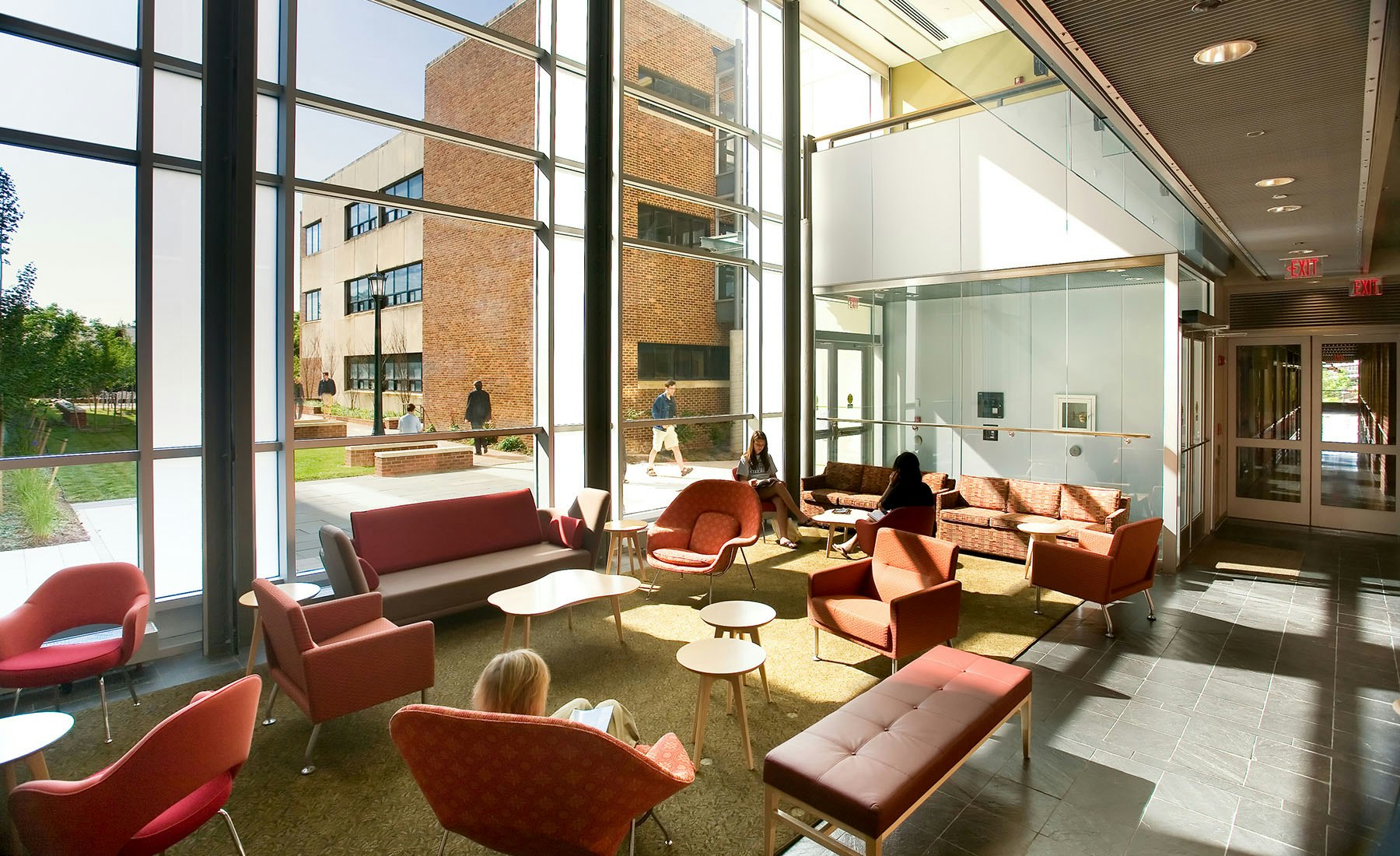For over a decade, the University of Virginia’s School of Engineering and Applied Science has been building an interdisciplinary strength in nanotechnology research. These efforts support the University’s established strengths in advanced materials, microelectronics, and information technology.
Bolstered by a National Science Foundation Grant and generous alumni contributions, the University began construction of a new facility. The goal of the $32 million, 100,000 GSF Materials Science Engineering and Nanotechnology building, named Wilsdorf Hall, is to encourage collaborative, interdisciplinary study among departments in the School of Engineering.
The building combines efforts of Materials Science, Chemical, Electrical and Computer Engineering and additional departments within the School of Engineering. Wilsdorf Hall houses one of five centers nationwide established by the National Science Foundation to advance research in nanotechnology. As such, the nanotechnology laboratory suites are key components of this project where applications will be introduced in the laboratories and tested for industry use.
Another goal of the facility is to foster collegiality between traditionally compartmentalized engineering disciplines. Located between the existing Chemical Engineering Building and Materials Science Engineering Building, Wilsdorf Hall physically joins two domains. Additionally, spaces were designed within the building that encourage interaction and collaboration among researchers. Project centers outfitted with conference tables, work stations and computer equipment allow teams of scientists to gather and share their work, enabling both formal and incidental interaction among departments. Glass walled research laboratories allow ongoing research to be a constant reference point, spurring innovation among scholars within the building.
As part of the preliminary design, the project team was also asked to conduct master planning for the University of Virginia’s central corridor, McCormick Road, where all of the University’s science programs are located. In order to improve science offerings, attract new faculty, and provide state-of-the-art laboratories the University needed to expand teaching and research facilities. Existing buildings failed to meet these demands. Constrained by residence halls and the football stadium, the science programs cannot expand outward to accomodate this growth. Instead, VMDO devised a plan to maximize space within the existing precinct.
Expansion allows each department new space for teaching laboratories within the University’s central grounds and to dedicate their existing buildings for research, which in turn benefits the undergraduate program as research is more fully integrated with teaching.
“Wilsdorf Hall is a major step forward in Virginia's commitment to best-in-class science and engineering education, built on the promise of collaborative research that will yield breakthrough discoveries for the global marketplace.”
First Chief Technology Officer of the United States and Former Virginia Secretary of Technology
Client: University of Virginia
Location: Charlottesville, VA
Discipline: Academics
Completion: 2006
Size: 100,000 SF






